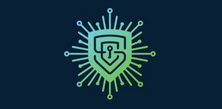 Training.jpg)
The Certified Ethical Hacker (CEH) Training is designed to teach advanced ethical hacking skills, enabling professionals to identify, exploit, and secure vulnerabilities in systems. This hands-on course covers topics such as penetration testing, malware threats, and network security using real-world tools and techniques. Prepare for the CEH certification and gain the expertise needed to protect organizations against evolving cyberattacks and strengthen overall security defenses.
Certified Ethical Hacker (CEH) Training Interview Questions Answers - For Intermediate
1. What is the purpose of penetration testing methodologies like OWASP?
OWASP (Open Web Application Security Project) provides guidelines and tools for identifying, exploiting, and mitigating vulnerabilities in web applications. It helps ethical hackers standardize their approach and ensures thorough testing across common attack vectors.
2. Can you explain the difference between black-box, white-box, and gray-box testing?
In black-box testing, the tester has no prior knowledge of the target system. White-box testing provides complete knowledge of the system, including source code and architecture. Gray-box testing combines both approaches, with partial knowledge to simulate an insider threat.
3. How does encryption differ from encoding?
Encryption secures data by converting it into an unreadable format using keys, and only authorized parties can decrypt it. Encoding, on the other hand, transforms data into a different format for compatibility or efficiency purposes and is easily reversible.
4. What is cross-site scripting (XSS), and how can it be mitigated?
XSS is a vulnerability that allows attackers to inject malicious scripts into web pages viewed by others. It can be mitigated by validating and sanitizing user input, implementing Content Security Policy (CSP), and escaping output data before rendering.
5. What is ARP spoofing, and how do you detect it?
ARP spoofing involves sending falsified ARP (Address Resolution Protocol) messages to associate the attacker’s MAC address with a legitimate IP address, enabling data interception. Detection tools like Wireshark or ARPWatch can identify abnormal ARP activity.
6. How do you secure a web application against brute force attacks?
To secure against brute force attacks, implement account lockout policies, CAPTCHA challenges, multi-factor authentication (MFA), and rate limiting for login attempts. Regular monitoring for unusual login patterns also helps.
7. What is steganography, and how is it different from cryptography?
Steganography hides data within files or images to conceal its existence, while cryptography secures data by encrypting it. The former focuses on obscurity, and the latter focuses on preventing unauthorized access.
8. Can you explain the role of honeypots in cybersecurity?
Honeypots are decoy systems or servers designed to attract attackers. They provide valuable insights into attacker behavior, methods, and tools, enabling organizations to improve their defenses without exposing critical infrastructure.
9. What is a zero-day vulnerability?
A zero-day vulnerability is an unknown software flaw for which no patch or mitigation exists. These are highly dangerous as attackers exploit them before the vendor can issue a fix.
10. How do you detect and mitigate a phishing attack?
Phishing attacks can be detected by monitoring for suspicious emails, links, or requests for sensitive information. Mitigation includes user training, deploying email filtering solutions, and implementing multi-factor authentication to reduce risks.
11. What is the difference between active and passive reconnaissance?
Active reconnaissance involves directly interacting with the target, such as scanning ports or testing access points, which may alert the target. Passive reconnaissance collects information from public sources without direct interaction, minimizing detection risk.
12. What is the purpose of network segmentation in security?
Network segmentation divides a network into smaller segments to isolate critical resources, limit the spread of malware, and restrict unauthorized access. It enhances security by implementing access controls at the segment level.
13. How does a virtual private network (VPN) secure communication?
A VPN secures communication by encrypting data transmitted between the user and the network. It creates a secure tunnel over public networks, ensuring data confidentiality, integrity, and protection from interception.
14. Can you explain the concept of DNS poisoning?
DNS poisoning, or DNS spoofing, is an attack where fake DNS entries are injected into a DNS server's cache. This misdirects users to malicious websites by resolving domain names to incorrect IP addresses. Mitigation involves DNSSEC and monitoring for anomalies.
15. What tools are commonly used for ethical hacking, and why?
Popular ethical hacking tools include:
- Nmap: For network scanning and mapping.
- Metasploit: For penetration testing and exploit development.
- Wireshark: For network packet analysis.
- Burp Suite: For web application security testing.
These tools streamline the identification, exploitation, and mitigation of vulnerabilities, making them essential for ethical hacking tasks.
Certified Ethical Hacker (CEH) Training Interview Questions Answers - For Advanced
1. How does ethical hacking address the challenges of securing industrial control systems (ICS)?
Industrial control systems (ICS), such as SCADA systems, are critical infrastructure components vulnerable to cyberattacks due to outdated software and weak authentication. Ethical hackers assess these systems by simulating real-world attacks, such as exploiting unpatched vulnerabilities or network misconfigurations. Testing focuses on ensuring secure communication protocols (e.g., TLS), isolating ICS networks from corporate IT systems, and deploying intrusion detection systems (IDS). Security recommendations include regular software updates, implementing role-based access control (RBAC), and monitoring network traffic for anomalies.
2. What is the difference between black hat, white hat, and gray hat hackers?
Black hat hackers exploit vulnerabilities with malicious intent, aiming to steal data, disrupt services, or damage systems. White hat hackers, or ethical hackers, operate with authorization to identify and fix security weaknesses. Gray hat hackers fall between the two, as they may discover vulnerabilities without permission but often report them without exploiting them for personal gain. Ethical hackers adhere strictly to legal and professional boundaries, ensuring their work enhances security without causing harm.
3. How do you secure a system against brute force attacks?
Brute force attacks involve systematically guessing passwords to gain unauthorized access. Ethical hackers test systems by simulating these attacks to identify weak password policies or vulnerable endpoints. Preventive measures include enforcing strong password requirements, implementing account lockouts after a certain number of failed attempts, using multi-factor authentication (MFA), and deploying CAPTCHA challenges. Monitoring login attempts and enabling rate limiting further reduces the risk.
4. What is the role of ethical hacking in securing Blockchain networks?
Blockchain networks rely on distributed ledgers for secure transactions, but vulnerabilities such as insecure smart contracts or misconfigured nodes can be exploited. Ethical hackers assess these networks by testing consensus mechanisms, analyzing smart contract code for vulnerabilities like reentrancy attacks, and simulating double-spend attempts. Security measures include using formal verification for smart contracts, implementing secure key management, and performing regular audits of blockchain codebases.
5. What is the difference between a worm, a virus, and ransomware?
A worm is a self-replicating malware that spreads across networks without needing a host file, often causing network congestion. A virus attaches itself to legitimate files and requires user interaction to spread, potentially corrupting or deleting data. Ransomware encrypts victim files and demands payment for decryption keys. Ethical hackers simulate scenarios involving these threats to identify vulnerabilities and recommend measures such as robust endpoint protection, regular backups, and employee training.
6. How would you assess the security of a hybrid cloud environment?
Ethical hackers assess hybrid cloud environments by testing configurations in public and private cloud components. They analyze identity and access management (IAM) policies, check for misconfigured storage buckets, and test APIs for vulnerabilities. Additionally, they simulate attacks on data in transit between cloud environments and test disaster recovery plans. Recommendations include using secure VPNs, deploying encryption for data at rest and in transit, and conducting regular penetration testing.
7. What is cross-site request forgery (CSRF), and how is it mitigated?
CSRF exploits the trust a web application has in a user’s browser by tricking the victim into performing unintended actions. For example, an attacker might forge a request to transfer funds on behalf of a user. Mitigation involves using anti-CSRF tokens, which validate each request’s authenticity, implementing the SameSite attribute in cookies, and requiring user reauthentication for sensitive actions.
8. How does ethical hacking ensure the security of mobile applications?
Ethical hackers test mobile apps by analyzing their code, permissions, APIs, and data storage mechanisms. They check for issues like insecure data storage, hardcoded credentials, and weak encryption. Tools like OWASP Mobile Security Testing Guide (MSTG) and mobile-specific testing frameworks are used. Recommendations include encrypting sensitive data, securing APIs, and ensuring apps adhere to platform security guidelines.
9. How do ethical hackers address phishing attacks targeting an organization?
Phishing attacks exploit human vulnerabilities by tricking employees into divulging sensitive information. Ethical hackers conduct simulated phishing campaigns to evaluate an organization's susceptibility. They recommend training programs to improve awareness, implementing email filtering solutions to block suspicious messages, and using domain-based message authentication, reporting, and conformance (DMARC) to prevent spoofed emails.
10. What is the significance of the kill chain in ethical hacking?
The cyber kill chain is a framework that outlines the stages of a cyberattack, from reconnaissance to execution. Ethical hackers use this model to understand and disrupt attack patterns. By identifying weaknesses at each stage—such as poor reconnaissance detection or weak endpoint defenses—hackers help organizations build layered security measures. Techniques like threat hunting and proactive monitoring align with this framework.
11. How do ethical hackers test for the security of remote access solutions?
Remote access tools, such as VPNs and RDP, are common attack vectors. Ethical hackers test these systems by simulating attacks like brute force attempts, exploiting unpatched vulnerabilities, and testing for weak credentials. They also assess the encryption protocols and configurations used. Recommendations include enabling MFA, monitoring remote sessions, and regularly updating remote access software.
12. How do you secure a system against insider threats?
Insider threats arise when employees misuse their access, either intentionally or accidentally. Ethical hackers assess insider threat risks by analyzing access control policies, monitoring for unusual activities, and testing data exfiltration scenarios. Mitigation strategies include implementing least privilege access, deploying data loss prevention (DLP) tools, and conducting regular audits of privileged account usage.
13. What is the difference between network-based and host-based intrusion detection systems (IDS)?
Network-based IDS monitors traffic across the network, identifying suspicious patterns such as port scans or DDoS attacks. Host-based IDS focuses on individual systems, analyzing file integrity, log events, and process activities. Ethical hackers test both systems to ensure they detect and respond to threats effectively. A combination of both systems provides comprehensive coverage.
14. How would you secure an organization’s DNS infrastructure?
DNS infrastructure is critical yet often targeted. Ethical hackers test DNS servers for vulnerabilities such as open resolvers, cache poisoning, and lack of DNSSEC. Security measures include enabling DNSSEC to verify the integrity of responses, using access controls to restrict who can query the DNS server, and monitoring for anomalous traffic patterns that indicate potential attacks.
15. What is the importance of threat intelligence in ethical hacking?
Threat intelligence involves gathering and analyzing data on potential threats, such as attacker tactics, tools, and vulnerabilities. Ethical hackers use this information to simulate realistic attack scenarios and prioritize vulnerabilities based on the likelihood and impact of exploitation. Integrating threat intelligence with ethical hacking helps organizations stay ahead of emerging threats and improve incident response capabilities.
Course Schedule
| Apr, 2025 | Weekdays | Mon-Fri | Enquire Now |
| Weekend | Sat-Sun | Enquire Now | |
| May, 2025 | Weekdays | Mon-Fri | Enquire Now |
| Weekend | Sat-Sun | Enquire Now |
Related Courses
Related Articles
Related Interview
- General Boosting and Bagging Interview Questions Answers
- COBIT Foundation 2019 Training Interview Questions Answers
- SAP HR305 Configuration of Master Data Training Interview Questions Answers
- Oracle Developer Forms and Reports Training Interview Questions Answers
- Blockchain Technical Interview Questions Answers
Related FAQ's
- Instructor-led Live Online Interactive Training
- Project Based Customized Learning
- Fast Track Training Program
- Self-paced learning
- In one-on-one training, you have the flexibility to choose the days, timings, and duration according to your preferences.
- We create a personalized training calendar based on your chosen schedule.
- Complete Live Online Interactive Training of the Course
- After Training Recorded Videos
- Session-wise Learning Material and notes for lifetime
- Practical & Assignments exercises
- Global Course Completion Certificate
- 24x7 after Training Support












 Join our Live Instructor-Led online classes delivered by industry experts
Join our Live Instructor-Led online classes delivered by industry experts